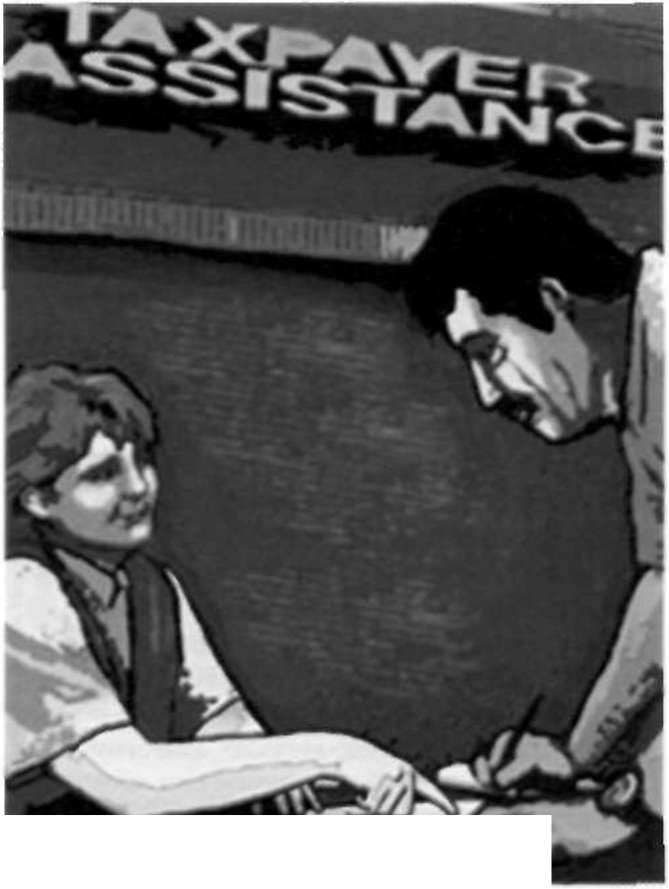ВУЗ: Не указан
Категория: Не указан
Дисциплина: Не указана
Добавлен: 18.10.2024
Просмотров: 256
Скачиваний: 1
85Before you listen 95
Before you read 99
Division of labour 100
Before you listen 101
Revision Vocabulary Units 5 to 8 104
Before you read 104
Surplus 105
Before you listen 106
Before you read 111
Price discrimination 111
Before you listen 112
Welfare economics 114
Before you listen 117
Before you read 118
Government revenue and spending 118
Before you listen 119
Before you read 121
Wealth, income and inequality 122
Before you listen 124
Before you read 125
Poverty 126
Before you listen 130
Macroeconomics 133
Before you listen 134
Before you read 135
ф D Vocabulary 135
Aggregate demand and aggregate supply 135
BP E Comprehension 137
Before you listen 137
0 F Listening *))) 137
ff G Speaking 138
Task 138
Revision Vocabulary Units 9 to 12 140
Unit 141
Before you read 141
Money 141
^ В Comprehension 142
Before you listen 142
В с Listening Ц))) 142
Before you read 142
0 D Vocabulary 143
Banks 148
В E Comprehension 149
Before you listen 149
F Listening Ц))) 149
G Speaking 150
Unit 151
Before you read 151
ff A Vocabulary 151
Fiscal policy 151
P В Comprehension 152
Before you listen 152
С Listening 4))) 152
Before you read 153
0 D Vocabulary 153
Monetary policy 153
Before you listen 156
rehension 156
Before you read 159
A Vocabulary 159
Interest rates and the money market 159
В Comprehension 160
С Listening H))) 161
Before you read 162
fiJ D Vocabulary 162
Economic shocks 162
Before you listen 165
G Speaking 166
Before you read 167
fif A Vocabulary 167
Inflation 167
Before you listen 169
Before you read 171
ff D Vocabulary 171
Unemployment 171
Before you listen 172
F Listening H))) 172
E Comprehension 172
G Speaking 172
9 H Writing 173
Revision Vocabulary Units 13 to 16 174
Unit 175
Before you read 175
Economic growth 176
9 В Comprehension 178
Before you listen 178
ff С Listening Ц))) 179
Before you read 179
ff D Vocabulary 179
The business cycle 180
fi? E Comprehension 181
Before you listen 181
F Listening И))) 182
H Writing 182
Before you read 183
f A Vocabulary 183
The open economy 183
? В Comprehension 184
Before you listen 185
С Listening 4))) 186
Before you read 186
BP D Vocabulary 186
Exchange rates 187
0 E Comprehension 189
Before you listen 189
F Listening H))) 190
G Speaking 191
Task 191
Before you read 192
A Vocabulary 192
Exchange rate mechanisms 192
й В Comprehension 193
Before you listen 193
0 С Listening 4))) 193
Before you read 194
9 D Vocabulary 194
International trade 194
Before you listen 195
В F Listening 4))) 195
G Speaking 196
Task 196
Unit 197
Before you read 197
В A Vocabulary 197
Less developed countries 198
в В Comprehension 199
Before you listen 199
0 С Listening *))) 199
Before you read 199
В D Vocabulary 199
The Russian economy in the 19th century 200
fij E Comprehension 201
Before you listen 201
F Listening 4))) 201
Task 203
H Writing 203
A Vocabulary 203
в? В Comprehension 205
Before you listen 205
0 С Listening 4))) 205
Before you read 205
ff D Vocabulary 205
Russia's foreign trade 206
9 E Comprehension 207
Before you listen 207
Revision Vocabulary Units 17 to 21 209
Shop assistants won't be able to steal □ money from the shop.
Now listen and check your answers.
Before you read
Discuss the following with your partner.
Look at the picture opposite:
-* What is happening?
-* What kind of things are sold here?
-* What are the advantages or disadvantages of this way of buying and selling?
ff D Vocabulary
Complete each sentence with a word or phrase from the box.
■ accordingly I auction ■ degree
discount discrimination guesswork in bulk markup price pensioners retailers fc risk-taking wholesaler
. Some people like dangerous sports because they enjoy
In an the item for sale is sold to the
customer who offers the highest price.
The is the extra money shops add to
the value of something in order to make a profit.
In the pasi, forecasting the weather was just
When you are in a formal situation, you have to dress and behave
In the winter sales the shops often give a of up to 50%.
When you buy you buy very large
quantities of something.
iswhen you treat some people
differently to others.
are people who sell things.
A isa company that buys large
quantities of goods from factories and sells them on to shopkeepers.
. To what you do something, means
how much you do it.
4S
NiihiIIh
Gu<d« to Economic* Uoit »
|
|
|
- |
|
|
|
|
|
Л |
Ф |
|
|
^ iY ^ |
41 —i |
|
S Reading 2
Price discrimination
The market price t<>r a product is like .1sjgn]»ost tor companies. It shows them more or less what people are prepared to pay Nevertheless, companies can s(.t their prices just above <>r just below the market price itthey want They ean even choose to ignore the market price completely In the real World <«|' business,setting prices involves skill, guesswork and risk-taking < с ■nipanii s ha\e lots • >t pricing tricksw Inch help to increase profits < >ne of these tricks is price dim riniiruition
I'rice discrimination means charging a different price for the same product to different customers For example, you walk hid • a sh< >p and buy a (A» for €15 A few minutes later. I walk into the sanu shop and buy another copy of exactly the same (:i> This time, the shopkeeper charges me €2<i! Thai's price discrimination.
There are different types, or degrees, of price discrimination. First i/cym prici ilisi-rimituttmn is when almost every consumer pays a different price for tile same product. How can iliis happenV Remember that the demand curve slopes downward, hi theory, every consumer has their own point on the curve, in other words.
each person values the product differently. Von may think that an hlton John CD is worth €2'». whereas 1 think it's only worth 5<> cents! We anon different points on the demand curve. With first degree discrimination, each consumer will pay what he or she thinks the product is worth, anil sellers charge each person accordingly
This all sounds great. but it is not usually practical m the real market place. Nevertheless, it is sometimes possible. An auction, for example, works in this way. In an auction, each consumer makes a bid for the product, and the highest bid wins. In ibis way. the product is sold at a price that the buyer thinks is right. Auctioning is becoming more and more common on the World Wide Web. and auctioning websites have become very big business.
Second degree price discriminationis more common than first degree discrimination. It involves changing price according to how much of the product is sold For example, if a customer buys three pencils, they pay oneeuro per pencil If they buy ,MX> pencils, they pay only 75 cents ]4'r pencil. This is a kind of reward for buying large amounts. This kind of discrimination is important for retailers It allows shopkeepers to buy i>oi4ls in bulk from wholesalers at lower prices. Shopkeejx'rs then add a markup price when they sell the gootls on to ordinary customers.
What а1н>ш third degree phce discriminationV This is when certain types of customer are charged different prices. For example, pensioners and students often j>et discounts on public transport or for arts events. These jx'ople cannot afford the normal market price. Ну offering discounts, companies widen their market share but still make a profit.
Ftegrstration kxm for proxy, telephone or internet trading
Now read the text again and choose the kind of price discrimination that matches these descriptions.
A different price is charged to each customer first degree second degree third degree
it helps make products and services more affordable to some people, first degree second degree third degree
It rarely happens in real markets, first degree second degree third degree The price falls as quantity rises, first degree second degree tliird degree It happens on the Internet, first degree second degree third degree
Before you listen
Discuss the following with your partner.

F Listening H)))
Now listen and complete the summary with words or numbers.
The online auction site eBay was started m
(1)D by Pierre Omidyar. He started
it as a (2) but it became a huge
business. On eBay, sellers show what they have and
buyers make (3) for the item. The
highest bidder wins. The system is an example of
) degree price discrimination and
it is very successful. Worldwide, the website has
) users. It trades $1.800 worth of
goods every (6)The most expensive
item sold on eBay was an (2) It sold
for $ (8)
Н«»|||Ц (ill! • , [h . « - t * 49
G Speaking
Discuss these questions with your partner.
Do you think consumer surplus is a good measure of welfare?
Is price discrimination fair?
Would you ever buy something at an auction or on the Internet?
Task
Give a two-minute talk on price.First make notes below on the following.
Whai is market price? (See Reading 1)
What is consumer and producer surplus? iSer Reading 1)
What is price discrimination and why do producers use it? (See Reading 2)
During your talk, use figure 1 on page 47 to help explain the idea of surplus. Also, give real examples that you know about to illustrate your points.
В н Writing
Imagine that you've got a good idea for an Internet commerce site (an Internet site which is also a business).Tell your friend what your idea is.
Informal letter to a friend
PARAGRAPH 1
Thank your friend for his her last letter. Make a comment about news that they told you in their letter. Tell them your news.
PARAGRAPH 2
Describe your idea for an Internet commerce site.
What product will you sell what service will you provide?
PARAGRAPH 3
Explain how you got the idea. Say why you think it will work.
Sign off Write 100-150 words

(
Pronunciation guide
Bargain n) Чккдлп. Jargon (Цшра Similarly \iire>Wi
Harm»l
ii Guxjt to t( pmr u U'>>t V
Unit
the
amount of a product that people buy or use
rule
made by government, and or the course it follows
policy
consumption
an exchange such as buying and selling
idea of being the same equal
level, for example from left to right
going straight up and down
someone who sets up a new business of their owr.
punish
income
f to ireat people reasonably and in the right way
to treat people unreasonably or in the wrong way
look into
share out
effect
a person
■ something important that people talk about
something that happens without being expected
Before
you read
Discuss
this question with your partner.
Welfare
economics has been called
economics with <i heart.What does this tell you about welfare economics?
A
Vocabulary
Match
the words and phrases with the definitions.
vertical
horizontal
equity
distribute
to bo fair
investigate
an individual issue
to
be unjust
penalise
entrepreneur
economic
transaction
impact
earnings
externality
ь
taxation

E Reading 1
Welfare economics
behind tin- numbers, charts and formulas of economies, there are people. Phis is sometimes easy to forget Economies isn't only about profits, losses and utility. It's about society. Economic ideas and theories often seem to 1ч- issues that art far removed from people's everyday lives.Welfare economics, however, tries to correct this It looks at how economic policies affect society, families and the individual.
t )nc of the big issues in welfare economics is c<tuitxEquity means fairness, and xrcltmc
Mtf mllin Oml4* to CconoMict Utn I® 51
economistsarc interested in measuring how lair our eeonomie systems are. < )ne way they do this is to look at how income and wealth are distributed among the population. Wei tare economists also investigate the effects of government policy on equity.
(iovernments" main weapon to light inequity (unfairness) is taxation. Welfare economists try to find out how taxation affects vertical equity and horizontal e<piity.which are two ideas that taxation systems can 1ч- based on. The idea behind vertical equity is that people with more income will pay more than those with less income. The idea behind horizontal equity is that people with the same income will pay the same amount of tax. Ideally, a tax system will have both vertical and horizontal equity.
However, some economists feel that any kind of taxation on people's earnings is unjust They believe it is unfair to penalise entrepreneurs and hard-workers. Why should people who are less able or less hard-working 1ч' supported by others': In this view of welfare economies, inequity is a natural feature of every economic system. Trying to create equity, they say. is just a waste of time. Instead, it is better to make economic systems more efficient. A more efficient economy grows faster ami everyone in society benefits.
Welfare economics isn't only alnnit the fairness of eeonomie systems. It's also about the impact that economic choices have on our lives. Kconomic transactions often affect oilier people who are not directly involved ill those transactions. Economists call these results елternalities. Externalities are sometimes good and sometimes bad for society. For example, pollution is anegative externalityof the ear industry. Hut cars give people better mobility, which is a positive externalityof the same industry.
52
M
j <
m
j п
:'д - •4 •'■
•t
»neir 'O !
Now road the text again and answer these questions in your own words in the space provided below.
According to the text, what do people often forget about economics?
How do governments try to make the economy fair?
What is the difference between horizontal and vertical equity?
Why do some economists think equity is not important?
What are externalities?

Before you listen
□ □ □ □ □ □
-> When externalities are good for society, they are called positive externalities. Can you think of any economic transactions that could have positive externalities?
С Listening И)))
Now listen and tick which transactions in the list are mentioned.
buying a new house
fixing up an old home
buying books
paying for a course at a local college
joining a gym
going on holiday
Before you read
Discuss these questions with your partner.
What do you think your government spends money on?
Whore do you imagine most of the government's money goes?
В
D Vocabulary
Complete each sentence with a word or phrase from the box.
benefits ■ charge ■ discourage essential financial ■ harmful income gap luxuries * source taxation
If you give someone help, you give
them money.
are money that the government
qives to people who need help.
If you someone from doing
something, you persuade them not to do it.
things are not good for your health.
The difference between the highest salaries and the lowest is called the
Companies customers for
their services.
For most people, the of their income
is paid work.
Governments get moat of their money through
Water ш to life, but it costs
very little.
10 are expensive things that we don't
really need.
Government revenue and spending

м
t
г.
* c,
i, j«
■ i
< '53
